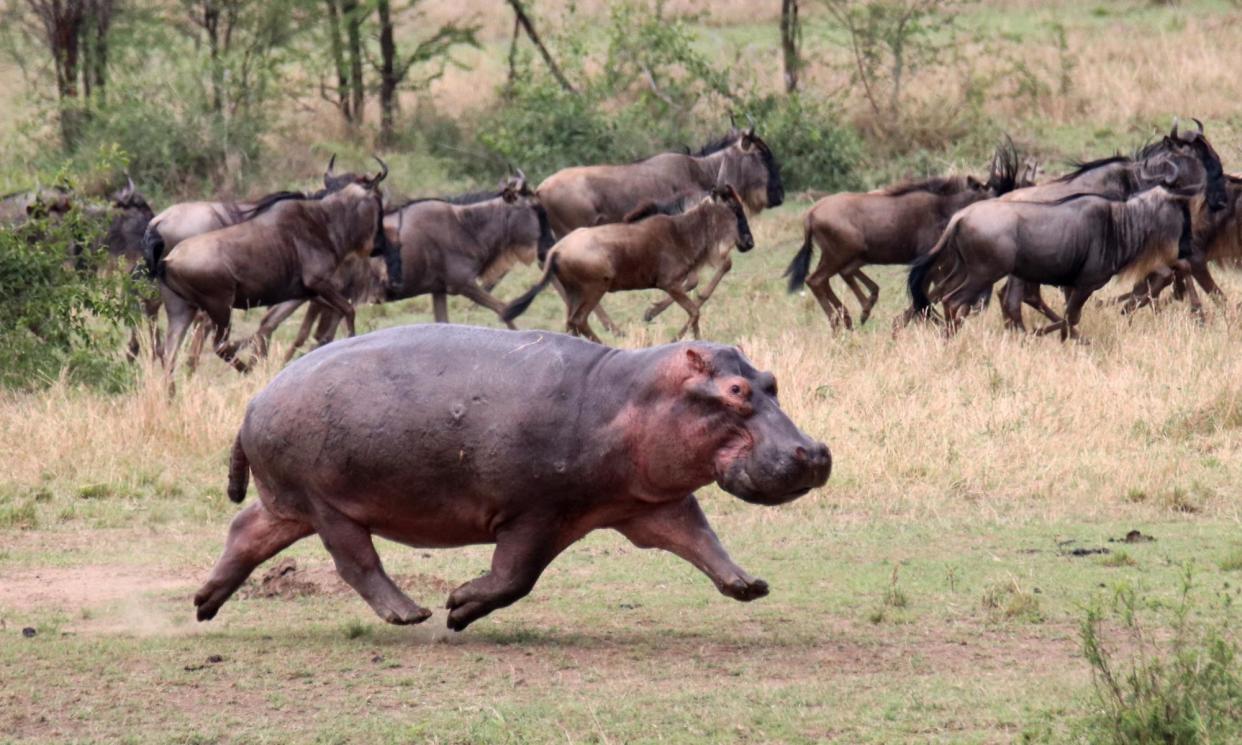Hippos might fly: UK research discovers animal can get airborne

It takes a scientific mind to see the grunting hulk of a hippopotamus and wonder whether, given sufficient motivation, such an improbable beast might ever become airborne.
And so to researchers at the Royal Veterinary College in North Mymms, Hertfordshire, whose painstaking examination of footage of the creatures revealed that when the hefty herbivores reach top speed they do indeed take off.
Video showed hippos got all four feet off the ground at once up to 15% of the time when thundering along at full pelt, often to chase off hippo rivals.
The finding plugs a gap in scientific knowledge and places hippos somewhere between elephants and rhinos in terms of the athletic prowess displayed by some of the heaviest land animals when they need to get a move on.
“I’ve struggled to get any work done on hippos before because they’re so hard to access,” said John Hutchinson, a professor of evolutionary biomechanics who led the research. “They’re incredibly dangerous, they tend to be most active at night, and they spend a lot of their time in the water.”
After finding no satisfying answer to the question in the scientific literature, Hutchinson dispatched a student, Emily Pringle, to Flamingo Land resort in North Yorkshire, where resident hippos have room to run. She videoed the animals as they moved between their stable and watering hole and brought back the footage for analysis.
The researchers went through it, and more gathered from YouTube, frame by frame to see whether hippos ever managed to get all four feet off the ground at once. Writing in PeerJ, they conclude that, unlike other large mammals, hippos typically stick to a trotting movement whatever speed they are moving at, but can become airborne in a rush.
Related: Majesty or steadiness: researchers identify two tiger personality traits
Other large land animals move differently. Elephants have a standard walking gait even at high speed and never fully leave the ground. Rhinos, meanwhile, can walk, trot and even break into a gallop. The hippo footage showed the animals, which can reach more than 2,000kg, typically trot, a movement that involves diagonally opposite legs moving in synchrony.
“It’s important for our understanding of what it means to be a big animal and move on land,” said Hutchinson. The work also helps researchers piece together the evolution of locomotion in large land animals, all the way back to the giant dinosaurs.
Hutchinson said the study was “as simple as biomechanics research can get”, but had its challenges: clicking through stacks of videos frame-by-frame was not for everyone. “It’s mind-numbing,” he said. “It’s one of the things in my work that I hate the most. It’s really boring. Agonising.”
And yet, further research beckons. Word has reached Hutchinson that pygmy hippos, a different species to the animals he studied, can gallop. It raises the question of whether baby hippos can do the same, suggesting a return trip to Flamingo Land may be in order.
“I’m wondering if baby hippos can do something that adult hippos can’t,” he said. “That would be pretty neat.”

 Yahoo News
Yahoo News 
